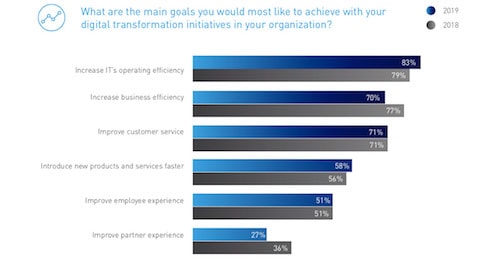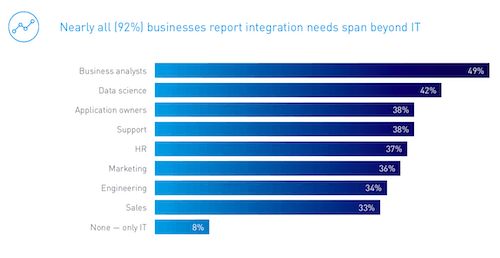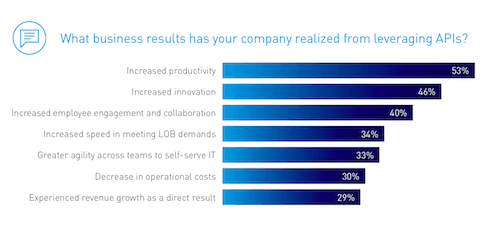Consumer demands are transforming what it means to be a successful business. In today’s digital world, we expect every aspect of our lives to be seamlessly connected. For businesses, this means digital is just the threshold for competition; to come out on top, IT and business leaders must tackle a new set of challenges.
For our recent Connectivity benchmark report, we surveyed 650 IT leaders from global enterprises to understand digital transformation drivers and challenges in businesses around the world – here are the top three trends we uncovered.
1: IT’s role is evolving into a catalyst for change
Digital transformation, which started as an IT initiative, has become a business-wide charge to enhance customer experiences. This has led to a shift in IT’s role, from traditionally operations-focused to a key driver of business strategy.
As a result, IT and business leaders report being more aligned than ever before. This year, 72% of IT leaders report they are aligned with the business versus 57% in 2018. The alignment between the two functions goes as deep as shared KPIs – their top goals for digital transformation initiatives are increasing efficiency in IT and the wider business and improving the customer experience.

2: Connecting the business is increasingly important
In the race to meet growing customer expectations and enable richer interactions, business units across companies need quick and easy access to data. As the key enabler of integration within the organization, IT now faces demands for integration that span beyond the IT department for 92% of organizations to a variety of functions across the business. From business analytics and data science to HR and marketing, each job function is using numerous, often disconnected, systems — placing even more demand on IT to deliver.

3: Top IT teams tap into lego-style API strategies
As businesses invest in new and disconnected technologies, IT teams are being stretched to deliver more projects than ever before. Despite the fact that IT project demands will increase by 32% this year, the majority of IT respondents will see a budget increase of less than 10%.
In order to do more with less, many businesses have tapped into APIs as the building blocks for a more evolutionary architecture. This approach allows anyone, from developers to major enterprises, to assemble and reuse those API “legos” based on changing business needs. And while APIs indeed have technical benefits, they also provide significant business value. Organizations that own APIs report an array of business results, including increased productivity and innovation and greater agility across teams to self-serve IT.

To access insights from hundreds of IT leaders on the state of digital transformation, download the Connectivity benchmark report.









